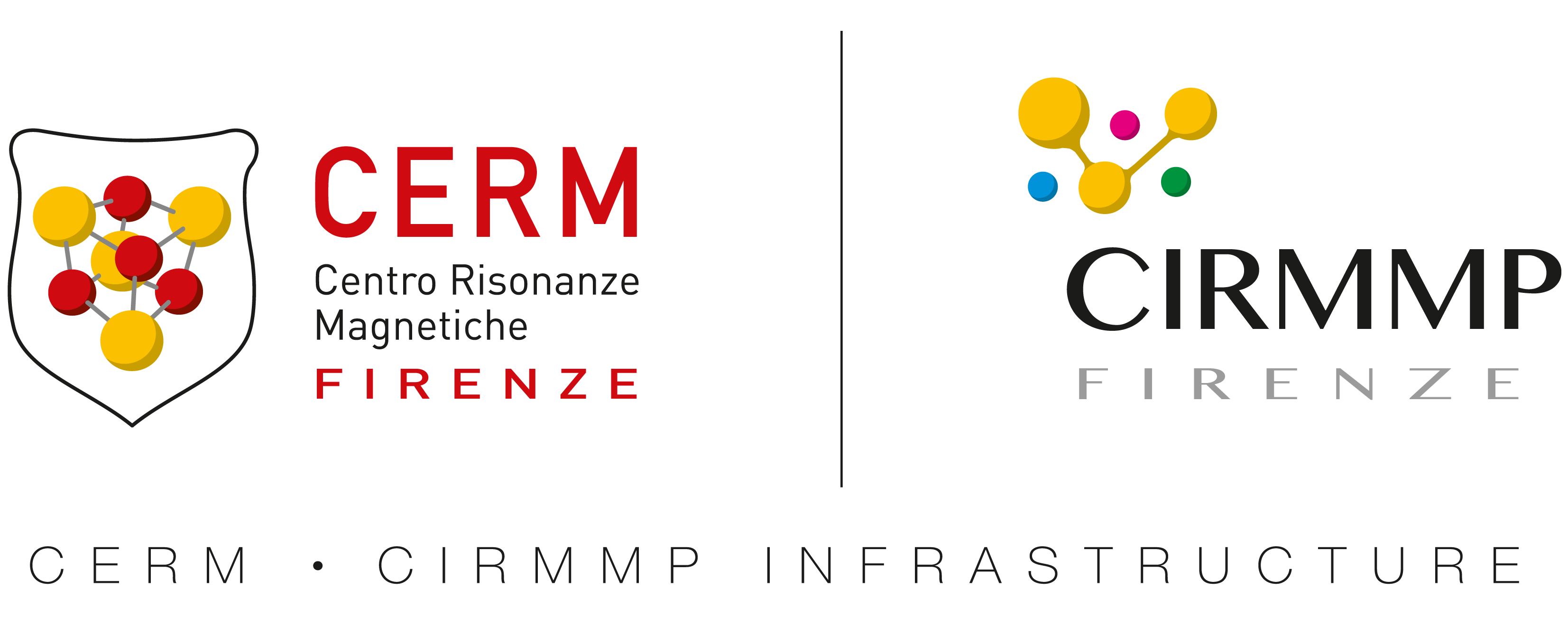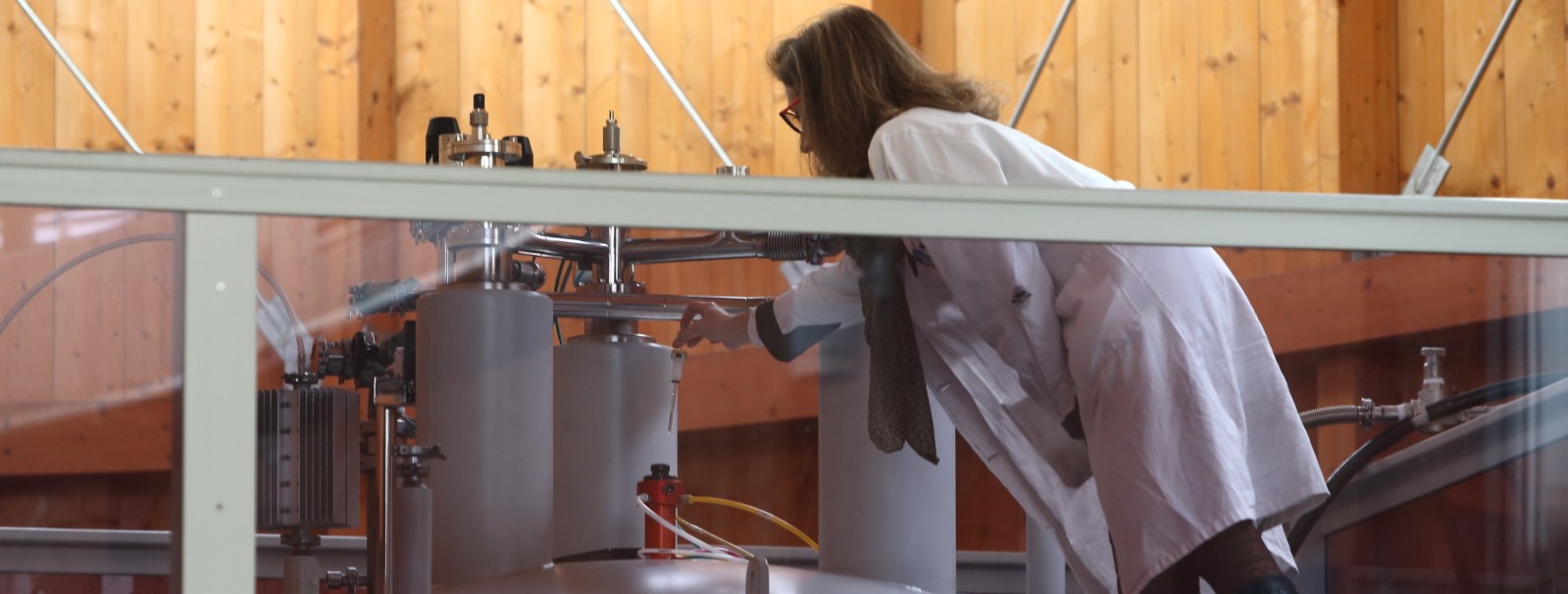NMR is such a versatile, powerful spectroscopic technique that the design of novel experimental methods constitutes an important aspect to exploit at best its potential. The advanced instrumentation available at CERM offers a wide range of possibilities for NMR methods development.
Recent improvements in instrumental sensitivity enabled direct detection of heteronuclei also for biomolecular solution NMR applications. A suite of experiments has been designed and is now available (pulse sequences and reference datasets are available in the Bruker release). These experiments can be used as a general tool to achieve protein sequence specific assignment and to obtain structural and dynamic information. They provide additional unique information in case of paramagnetic proteins1–4, very large proteins5–7, intrinsically disordered proteins8.
In the recent times, solid state NMR has witnessed a profound advancement in terms of sensitivity and resolution. Fast magic angle spinning (MAS, beyond 50 kHz) and magnetic fields now exceeding 28 T, have promoted biomolecular SSNMR by providing high resolution and permitting 1H detection, which results in a large sensitivity gain with respect to standard heteronuclear detection.9-13 In this context there is a need to define proper sample manipulation stategies14, time-optimization of the experiments15 and dedicated processing approaches16 .
In paramagnetic metalloproteins, including denovo designed metalloproteins, the quantitative analysis of the contributions arising from the hyperfine interaction (shifts, relaxation), from self-orientation and from cross correlation effects can be studied, from low to ultra-high magnetic fieldsR1-R5. Tailored experimental approaches have been recently developed to measure R1 and R2 rates of fast relaxing signals, and the efficiency of paramagnetism-based NMR restraints for structure calculations in metalloproteins assessedR6-R11.
Selected papers:
(1) Bermel, W.; Bertini, I.; Felli, I. C.; Kümmerle, R.; Pierattelli, R. 13C Direct Detection Experiments on the Paramagnetic Oxidized Monomeric Copper, Zinc Superoxide Dismutase. J. Am. Chem. Soc. 2003, 125 (52). https://doi.org/10.1021/ja037676p
(2) Arnesano, F.; Banci, L.; Bertini, I.; Felli, I. C.; Luchinat, C.; Thompsett, A. R. A Strategy for the NMR Characterization of Type II Copper(II) Proteins: The Case of the Copper Trafficking Protein CopC from Pseudomonas Syringae. J. Am. Chem. Soc. 2003, 125 (24). https://doi.org/10.1021/ja034112c
(3) Bertini, I.; Felli, I. C.; Luchinat, C.; Parigi, G.; Pierattelli, R. Towards a Protocol for Solution Structure Determination of Copper(II) Proteins: The Case of CuIIZnII Superoxide Dismutase. ChemBioChem 2007, 8 (12), 1422–1429. https://doi.org/10.1002/cbic.200700006
(4) Bermel, W.; Bertini, I.; Felli, I. C.; Piccioli, M.; Pierattelli, R. 13C-Detected Protonless NMR Spectroscopy of Proteins in Solution. Prog. Nucl. Magn. Reson. Spectrosc. 2006, 48 (1). https://doi.org/10.1016/j.pnmrs.2005.09.002
(5) Turano, P.; Lalli, D.; Felli, I. C.; Theil, E. C.; Bertini, I. NMR Reveals Pathway for Ferric Mineral Precursors to the Central Cavity of Ferritin. Proc. Natl. Acad. Sci. 2010, 107 (2), 545–550. https://doi.org/10.1073/pnas.0908082106
(6) Bertini, I.; Felli, I. C.; Kümmerle, R.; Moskau, D.; Pierattelli, R. 13C-13C NOESY: An Attractive Alternative for Studying Large Macromolecules. J. Am. Chem. Soc. 2004, 126 (2), 464–465. https://doi.org/10.1021/ja0357036
(7) Matzapetakis, M.; Turano, P.; Theil, E. C.; Bertini, I. 13C-13C NOESY Spectra of a 480 KDa Protein: Solution NMR of Ferritin. J. Biomol. NMR 2007, 38 (3), 237–242. https://doi.org/10.1007/s10858-007-9163-9
(8) Felli IC, Pierattelli R. J Magn Reson. Novel methods based on (13)C detection to study intrinsically disordered proteins. 2014 Apr;241:115-25. doi: 10.1016/j.jmr.2013.10.020. PMID: 24656084 Review
(9) Bertini, I.; Emsley, L.; Lelli, M.; Luchinat, C.; Mao, J.; Pintacuda, G. Ultrafast MAS Solid-State NMR Permits Extensive 13C and 1H Detection in Paramagnetic Metalloproteins. J. Am. Chem. Soc. 2010 132 (16) 5558-5559. https://doi.org/10.1021/ja100398q
(10) Knight, M.J.; Webber, A.L.; Pell, A.J.; Guerry, P.; Barbet-Massin, E.; Bertini, I.; Felli, I.C.; Gonnelli, L.; Pierattelli, R. Emsley, L.; Lesage, A.; Herrmann, T.; Pintacuda, G. Fast Resonance Assignment and Fold Determination of Human Superoxide Dismutase by High‐Resolution Proton‐Detected Solid‐State MAS NMR Spectroscopy. Angew. Chem. Int. Ed. 2011 50, 11697-11701. https://doi.org/10.1002/anie.201106340
(11) Knight, M.J.; Felli, I.C.; Pierattelli, R.; Bertini, I.; Emsley, L.; Herrmann, T.; Pintacuda, G. Rapid Measurement of Pseudocontact Shifts in Metalloproteins by Proton-Detected Solid-State NMR Spectroscopy J. Am. Chem. Soc. 2012 134 (36) 14730-14733. https://doi.org/10.1021/ja306813j
(12) Bertarello, A.; Schubeis, T.; Fuccio, C.; Ravera, E.; Fragai, M.; Parigi, G.; Emsley, L.; Pintacuda, G.; Luchinat, C. Paramagnetic Properties of a Crystalline Iron–Sulfur Protein by Magic-Angle Spinning NMR Spectroscopy Inorg. Chem. 2017 56, 6624-6629
(13) Ravera, E.; Cerofolini, L.; Martelli, T.; Louka, A.; Fragai, M.; Luchinat, C. (1) H-detected solid-state NMR of proteins entrapped in bioinspired silica: a new tool for biomaterials characterization. Sci. Rep. 2016 6 27851
(14) Ravera, E.; Ciambellotti, S.; Cerofolini, L.; Martelli, T.; Kozyreva, T.; Bernacchioni, C.; Giuntini, S.; Fragai, M.; Turano, P.; Luchinat, C. Solid‐State NMR of PEGylated Proteins. Angew. Chem. Int. Ed. 2016 55 2445-2449
(15) Giuntini, S.; Cerofolini, L.; Ravera, E.; Fragai, M.; Luchinat, C. Atomic structural details of a protein grafted onto gold nanoparticles. Sci. Rep. 2017 7 1
(16) Bruno, F.; Francischello, R.; Bellomo, G.; Gigli, L.; Flori, A.; Menichetti, L.; Tenori, L.; Luchinat, C.; Ravera, E. Multivariate Curve Resolution for 2D solid-state NMR spectra. Anal. Chem. 2020 92 4451-4458
(R1) Kateb, F, and Piccioli, M., New routes to the detection of relaxation allowed coherence transfer in paramagnetic molecules., J. Am. Chem. Soc. 2003,125:14978-9.
(R2) Brancaccio D., Gallo A., Mikolaijczyk M., Zovo K., Palumaa P., Novellino E., Piccioli M., Ciofi-Baffoni S., Banci L., Formation of [4Fe-4S] clusters in the mitochondrial iron-sulfur cluster assembly machinery J. Am. Chem. Soc. 2014 Nov 19;136(46):16240-16250
(R3) Parigi G, Ravera E, Luchinat C. Magnetic susceptibility and paramagnetism-based NMR Prog Nucl Magn Reson Spectrosc. 2019;114-115:211-236
(R4) Parigi G, Benda L, Ravera E, Romanelli M, Luchinat C. Pseudocontact shifts and paramagnetic susceptibility in semiempirical and quantum chemistry theories. J Chem Phys. 2019 Apr 14;150(14):144101
(R5) Camponeschi F, Muzzioli R, Ciofi-Baffoni S, Piccioli M, Banci L. Paramagnetic 1H NMR Spectroscopy to Investigate the Catalytic Mechanism of Radical S-Adenosylmethionine Enzymes. J Mol Biol. 2019 Nov 8;431(22):4514-4522. doi: 10.1016/j.jmb.2019.08.018
(R6) Bertini, I., Jiménez, B, Piccioli, M. and Poggi, L., Asymmetry in 13C-13C COSY spectra identifies ligand geometry in paramagnetic proteins, J. Am. Chem. Soc. , 2005, 127, 12216-7.
(R7) Mori M, Kateb F, Bodenhausen G, Piccioli M, Abergel D. Toward structural dynamics: protein motions viewed by chemical shift modulations and direct detection of C'N multiple-quantum relaxation. J Am Chem Soc. 2010,132, 3594-3600
(R8) Banci L., Bertini I., Calderone V., Ciofi-Baffoni S., Giachetti A., Jaiswal D., Mikolajczyk M., Piccioli M., Winkelmann J, A molecular view of an electron transfer pathway essential for iron-sulfur protein biogenesis, Proc Natl Acad Sci U S A. 2013, 110(18), 7136-7141
(R9) Ciofi Baffoni S., Gallo A., Muzzioli R., Piccioli M., The IR-15N-HSQC-AP experiment: a new tool for NMR spectroscopy of paramagnetic molecules, J. Biomol. NMR 2014, 58, 123-128
(R10) Trindade I, Invernici M, Cantini, C, Louro R, Piccioli M. , NOE-less protein structures-an alternative paradigm in Highly Paramagnetic Systems arXiv:2002.01228
(R11) Invernici M, Trindade I, Cantini, C, Louro R, Piccioli M: Measuring Transverse Relaxation in highly paramagnetic systems (submitted)

